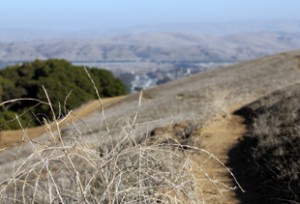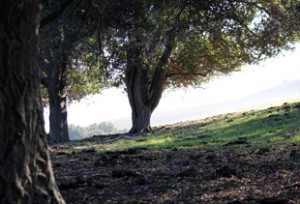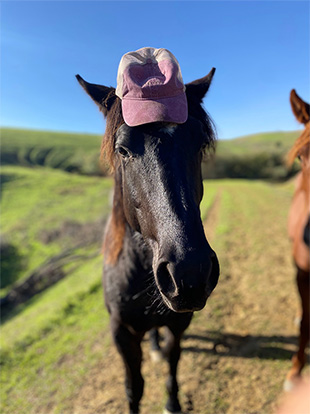 With the recent drought approaching extreme severity all over California, one might stop to wonder what more we can do and where can water use best be reduced. To answer that, it is important to know where most of it goes in the first place! We recently received an article from the California Department of Food and Agriculture that gives us those answers.
With the recent drought approaching extreme severity all over California, one might stop to wonder what more we can do and where can water use best be reduced. To answer that, it is important to know where most of it goes in the first place! We recently received an article from the California Department of Food and Agriculture that gives us those answers.
There are 3 main categories of usage:
Environmental water “use” averages 50% of our total statewide usage. There are four subcategories included as “Environmental” water.
– “Wild and scenic” rivers protected under Federal and state laws
– Water required to maintain habitat within streams
– Water that supports wetlands in wildlife preserve
– Water that maintains water quality for agricultural and urban use
Holding steady at 40% of our usage is agricultural water. Nine million acres of farmland are irrigated in California and represents about 80% of all human water use.
Despite our growing population, total “urban” water usage is also holding steady at 10% of California’s water consumption.
 The San Francisco Bay and South Coastal regions account for the highest amount of urban water use. Both regions rely heavily on water imported from other parts of the state. Residents of California can take pride in their conscientious water consumption. Per capita use has declined significantly from 232 gallons per day per person in 1990 to 178 gallons per day in 2010. Coastal residents use far less than inland residents with 145 gallons per day versus 276 gallons per day. This is largely due to reduced landscaping on the coast.
The San Francisco Bay and South Coastal regions account for the highest amount of urban water use. Both regions rely heavily on water imported from other parts of the state. Residents of California can take pride in their conscientious water consumption. Per capita use has declined significantly from 232 gallons per day per person in 1990 to 178 gallons per day in 2010. Coastal residents use far less than inland residents with 145 gallons per day versus 276 gallons per day. This is largely due to reduced landscaping on the coast.
Our current drought creates new challenges to water conservation. Residential or “urban” consumption has already benefited greatly from water saving technology. This limits improvement in this category, leaving the biggest potential for water saving measures in urban regions to reducing landscape irrigation, requiring not only improved adoption of technology but also behavioral changes. The Central Valley takes the largest chunk of the agricultural consumption. Thus far, sustainable management of groundwater has not been successful, which is identified as a major issue of concern. The increase in perennial crops like nuts, grapes, and other fruit, improves economic profits but these crops must be irrigated to survive increasing drought vulnerability and thereby, making them unviable candidates for irrigation reductions.
 Personally, I do not envy our state and federal regulators who must make tough calls as to when and how to allocate water resources; weighing the pros and cons of short term gain versus the long term damage of those decisions. Choices to impact short term economic gain almost always results in long term, irrevocable damage to the environment such as the extinction of plant, insect, fish and wildlife species. While my minuscule choices may be minor, I choose to do my part. Simple things like drinking the glass of water they routinely bring to my table at local restaurants (or declining it if I know I won’t drink it), running only full loads in the dishwasher or washing machine, short and sweet showers under low flow shower heads and low flush toilets that I skip flushing at night, turning off the water while brushing my teeth or washing my face are all easy, behavioral changes that can make a small difference. Tougher options but ones that are manageable with a small amount of planning are to collect grey water that would otherwise run down the drain and use this water for your garden needs. I remember during the devastating drought of the late 1980’s, my step-mom ran a hose from the washing machine outside to a large garbage can where she collected the rinse water for her precious cottage style garden. She even attempted to collect as much of her shower run-off as she could!!
Personally, I do not envy our state and federal regulators who must make tough calls as to when and how to allocate water resources; weighing the pros and cons of short term gain versus the long term damage of those decisions. Choices to impact short term economic gain almost always results in long term, irrevocable damage to the environment such as the extinction of plant, insect, fish and wildlife species. While my minuscule choices may be minor, I choose to do my part. Simple things like drinking the glass of water they routinely bring to my table at local restaurants (or declining it if I know I won’t drink it), running only full loads in the dishwasher or washing machine, short and sweet showers under low flow shower heads and low flush toilets that I skip flushing at night, turning off the water while brushing my teeth or washing my face are all easy, behavioral changes that can make a small difference. Tougher options but ones that are manageable with a small amount of planning are to collect grey water that would otherwise run down the drain and use this water for your garden needs. I remember during the devastating drought of the late 1980’s, my step-mom ran a hose from the washing machine outside to a large garbage can where she collected the rinse water for her precious cottage style garden. She even attempted to collect as much of her shower run-off as she could!!
While I don’t know if I can go to such extremes as she did for my plants, this current drought reinforces my desire to plant only drought tolerant plants in my garden, keeping the fluffy, delicate high water annuals to a minimum!!
Please feel free to post your own tips and suggestions as to how to help others learn ways to reduce their own water footprint in this time of need while we all look to the skies and hope for a rainy, wet winter!!




